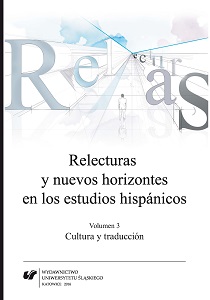Exposición Iberoamericana de 1929: Sevilla como la capital de la Raza Hispana
1929 Ibero-American Exposition: Seville as the Capital of the Hispanic Race
Author(s): Maria Małkowska
Subject(s): Language and Literature Studies, Literary Texts, Studies of Literature, Theory of Literature
Published by: Wydawnictwo Uniwersytetu Śląskiego
Keywords: Seville; Ibero-American Exposition; Universal Exposition; Hispanic Rac; memory
Summary/Abstract: The Ibero-American Exposition, celebrated in Seville in 1929, formed part of the regenerationist strategy concocted to compensate for the loss of the colonies. Spain ceasedto be a factual power and had to reinvent itself as a spiritual one. Hence, the Expositionlauded the glorious past, celebrated the rich culture and foregrounded the role of Spaniardsas the civilizing conquerors of the New World. Seville, crucial for the discovery and colonization of America, was a symbol of the past grandeur of the lost empire. By hosting and becoming part of the Exhibition the city, branded as the birthplace of the Hispanic Race, enhanced its symbolic value. The analysis of the program shows the utility of the concept of the Hispanic Race in the process of recreating the myth of Seville, as well as in rebuilding the city: the capital of the new, spiritual empire and the gate of Europe.
Book: Relecturas y nuevos horizontes en los estudios hispánicos. Vol. 3: Cultura y traducción
- Page Range: 21-29
- Page Count: 9
- Publication Year: 2016
- Language: Spanish
- Content File-PDF

